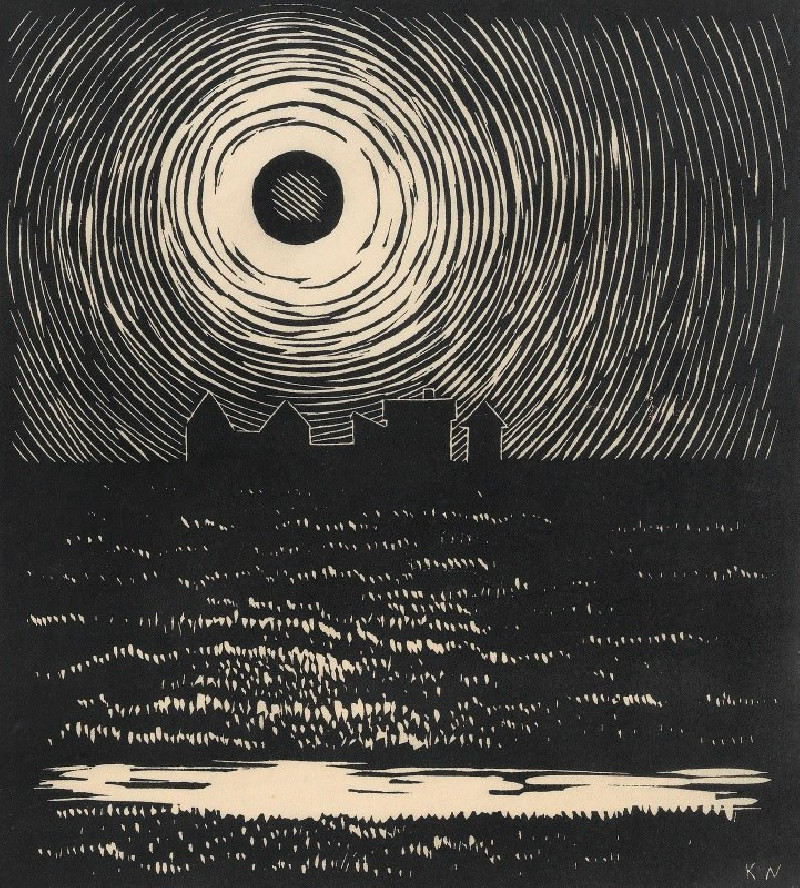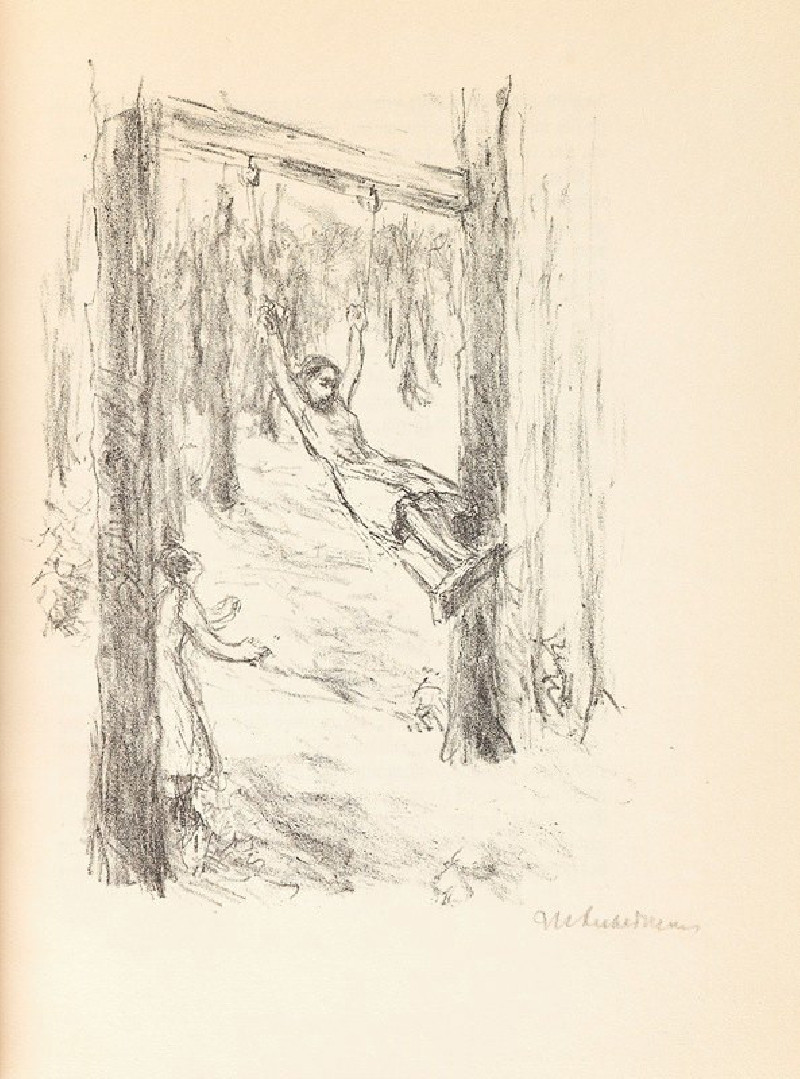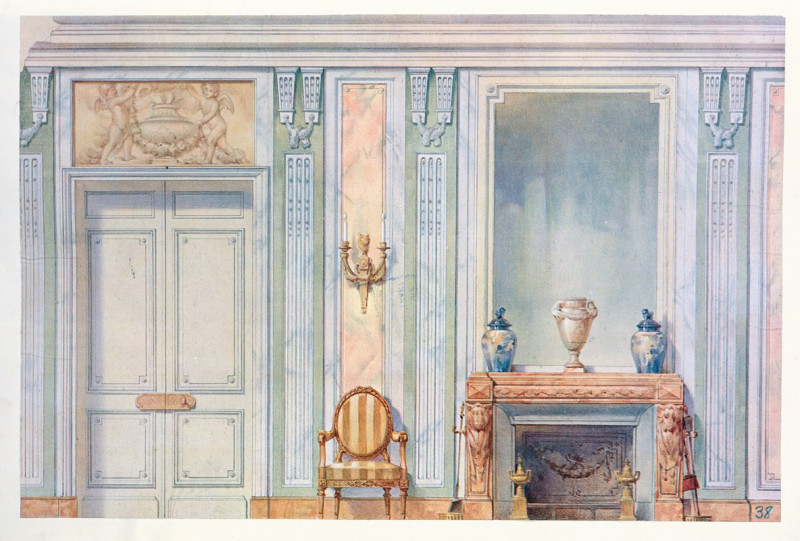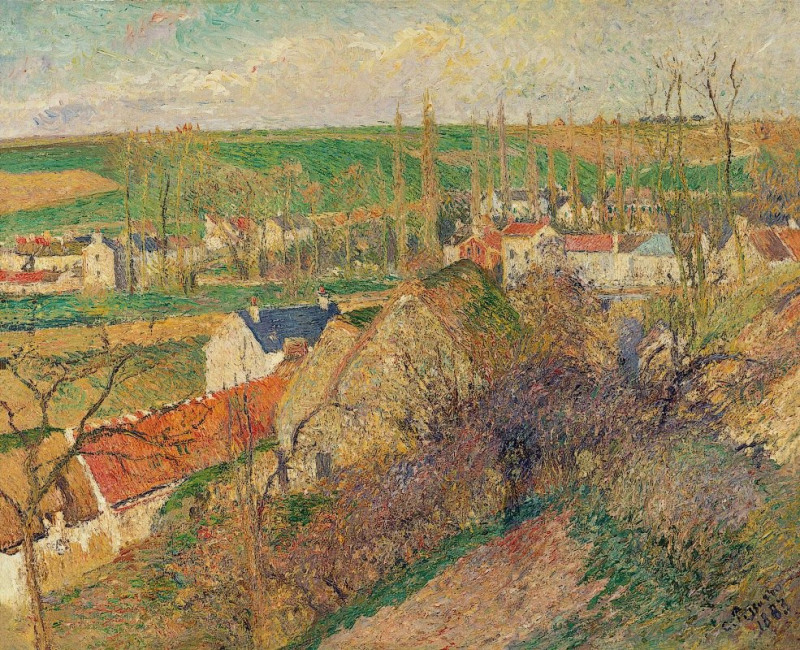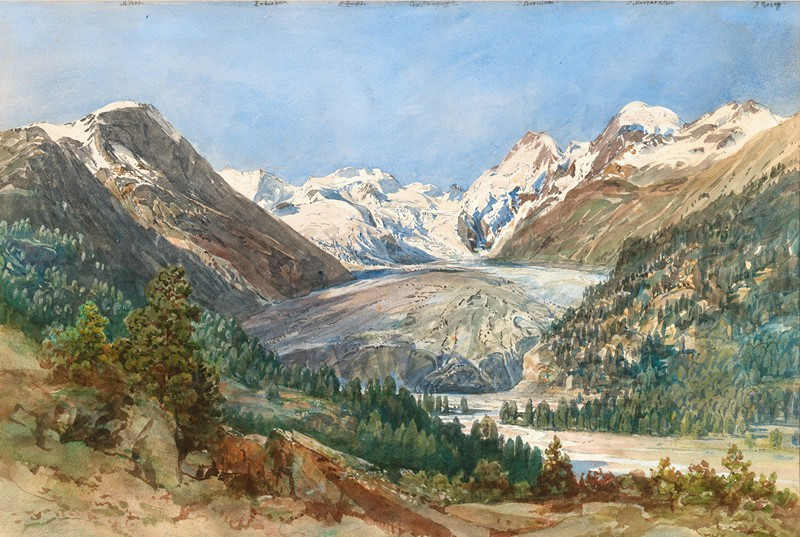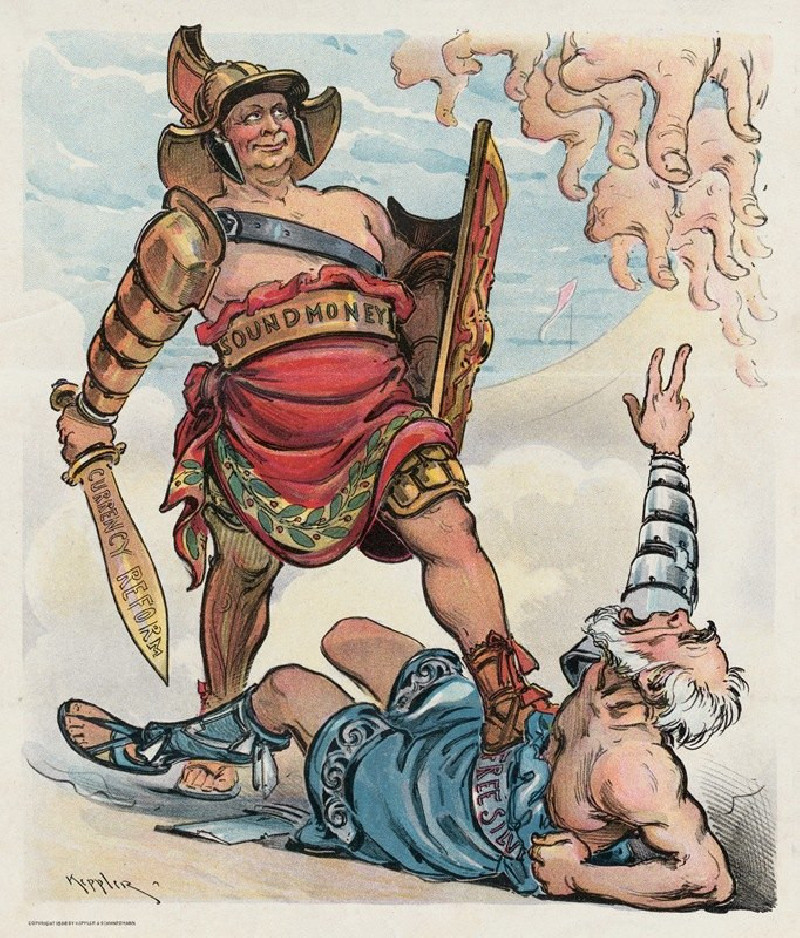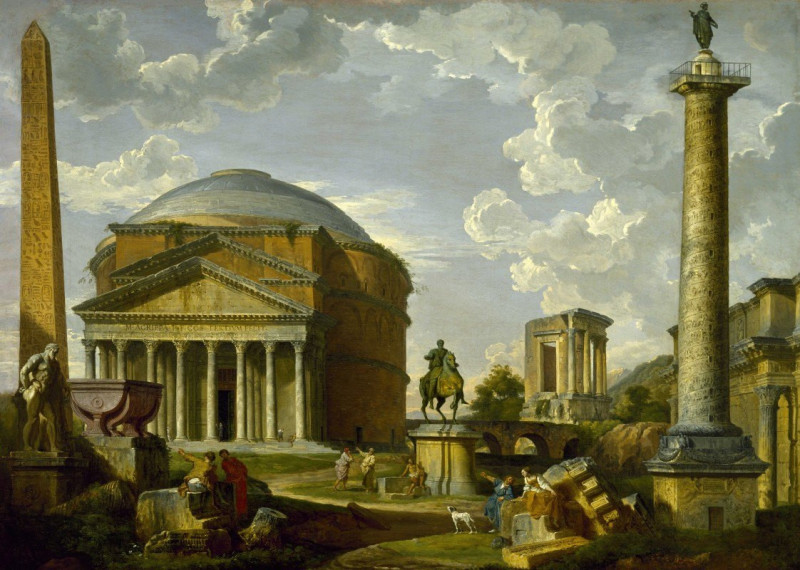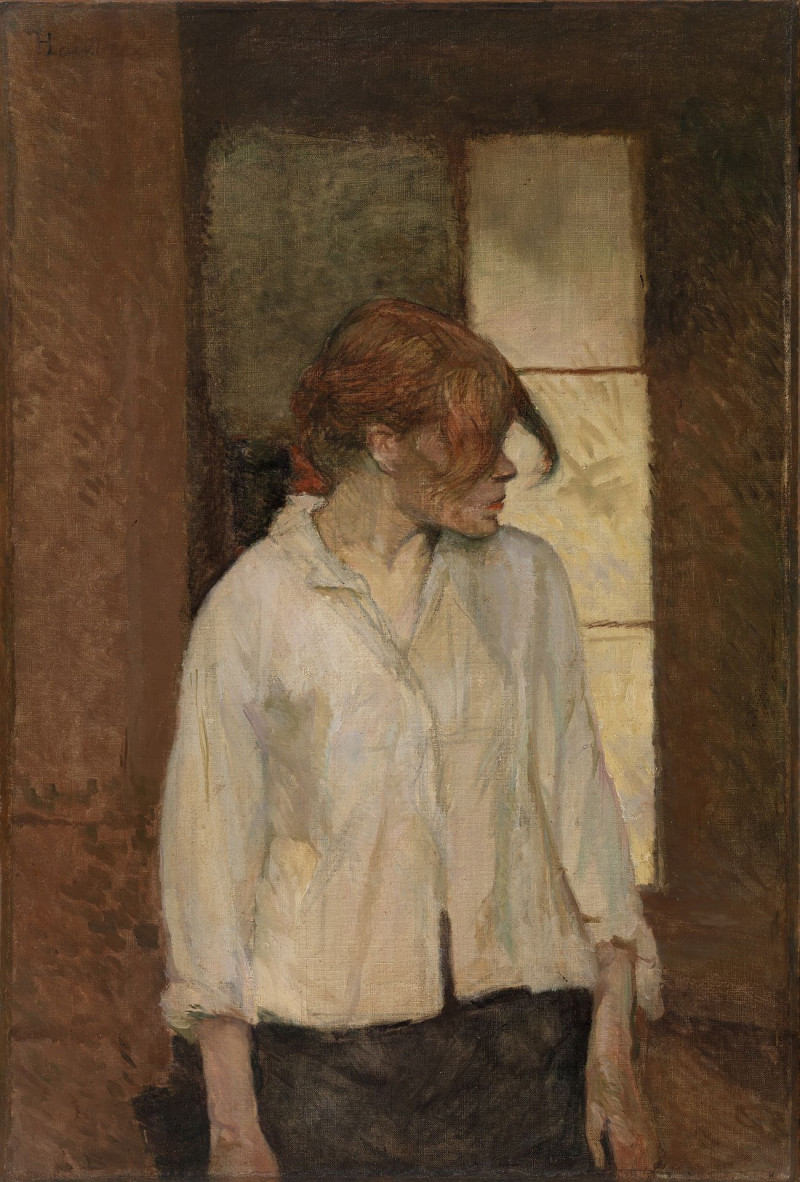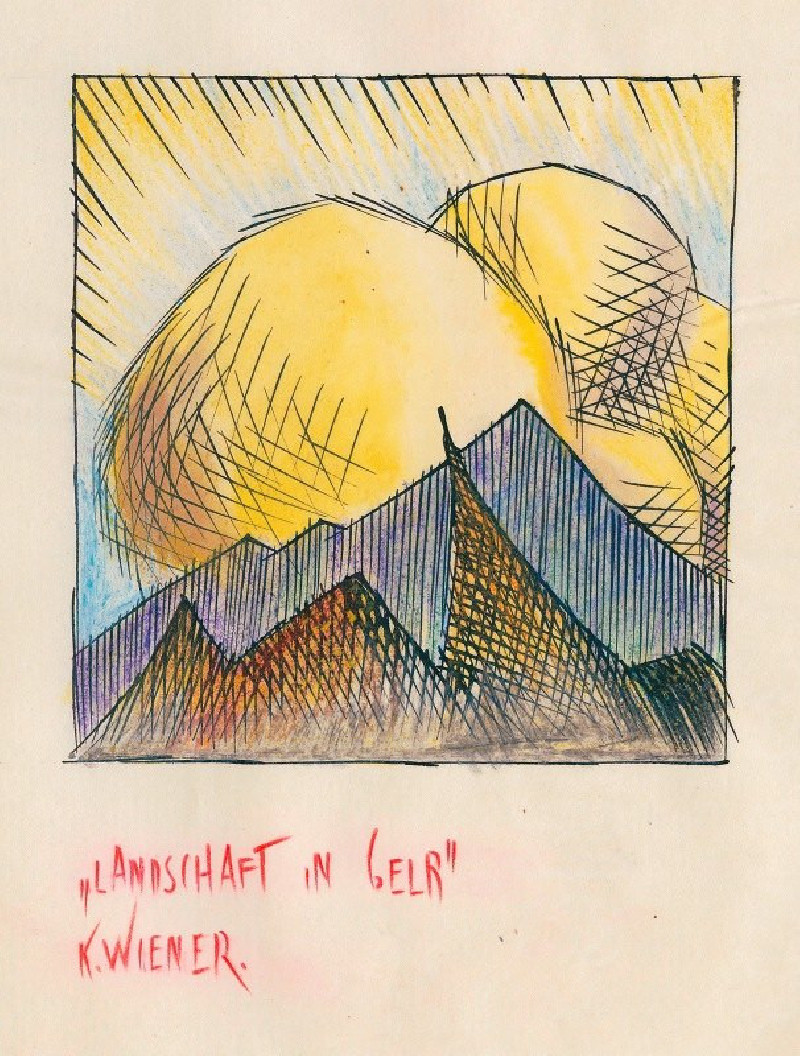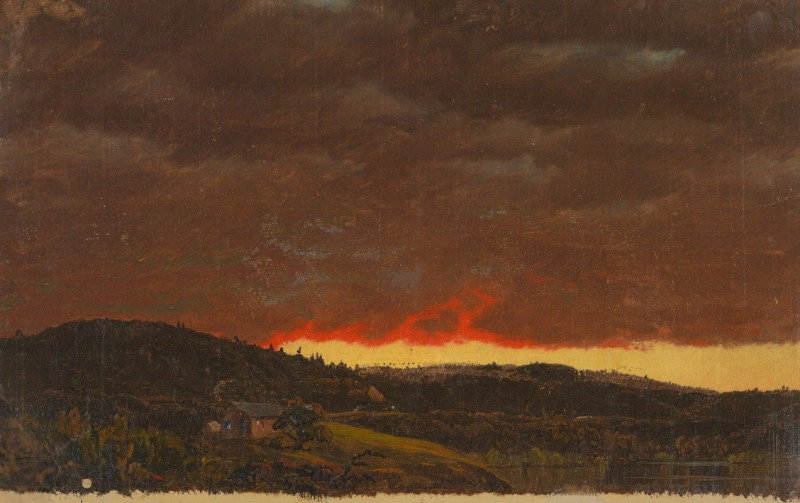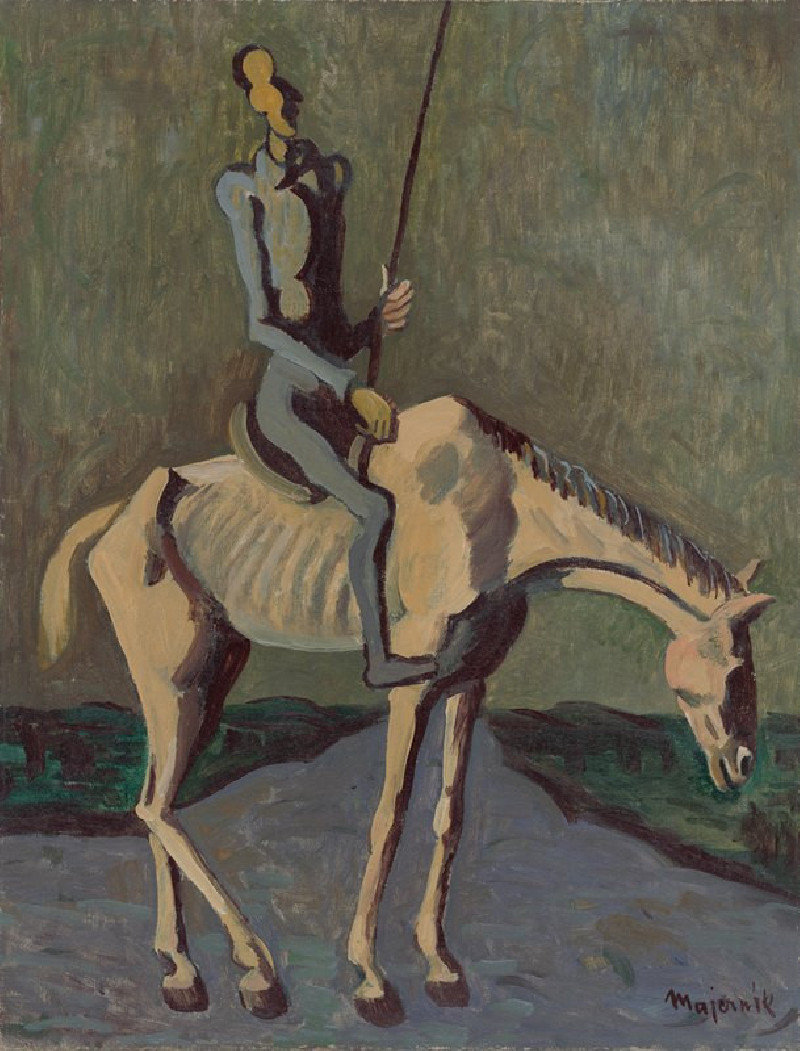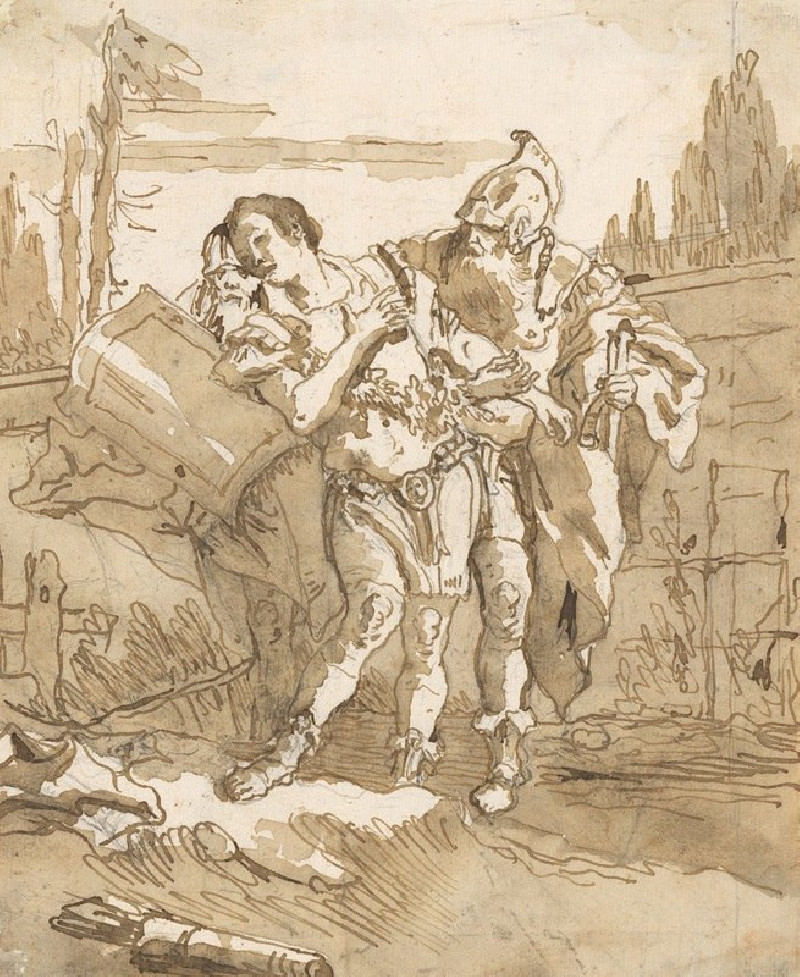Sonnenuntergang (around 1929)
Technique: Giclée quality print
Recommended by our customers
More about this artwork
"Sonnenuntergang" (Sunset) by Karl Wiener, circa 1929, is a captivating example of modernist graphic art. The painting starkly depicts a powerful contrast between the calm, linear simplicity of human habitation and the dynamic, swirling chaos of nature.Intricately rendered in black and white, the work features the silhouette of a village skyline set against a whirlpool-like sun, radiating an intense energy across the sky. The hypnotic circular patterns of the sun's rays draw the eye inward, suggesting the overwhelming force and motion of the celestial body as it descends below the horizon. Below, the landscape is minimally depicted with waves of textured fields, adding a sense of quiet motion that contrasts sharply with the turbulent sky.Karl Wiener's artistry constructs a mesmerizing visual rhythm through this dramatic interplay of light and dark, order and chaos, bringing forth an emotional depth and a contemplative mood centered on the daily spectacle of the sunset.

